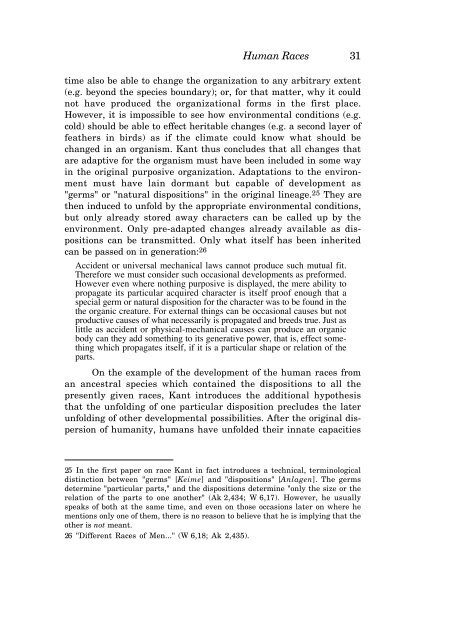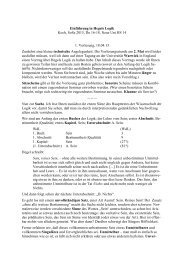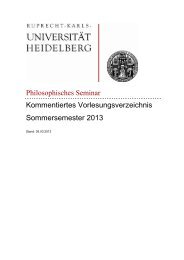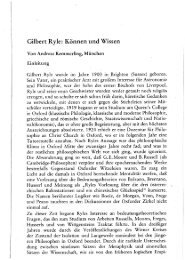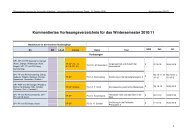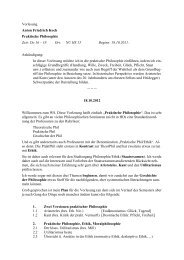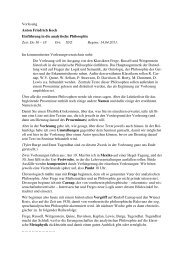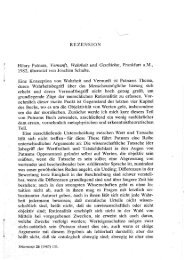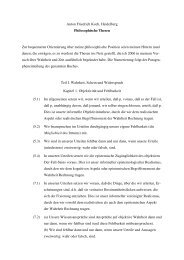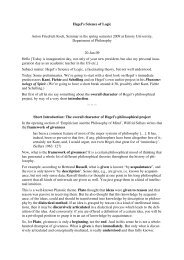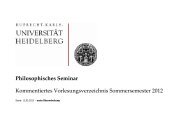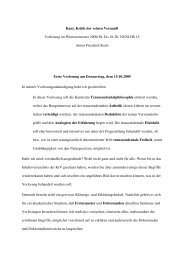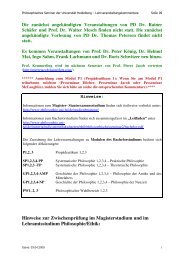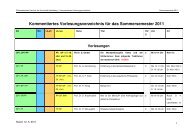KANT'S CRITIQUE OF TELEOLOGY IN BIOLOGICAL EXPLANATION
KANT'S CRITIQUE OF TELEOLOGY IN BIOLOGICAL EXPLANATION
KANT'S CRITIQUE OF TELEOLOGY IN BIOLOGICAL EXPLANATION
Create successful ePaper yourself
Turn your PDF publications into a flip-book with our unique Google optimized e-Paper software.
Human Races 31<br />
time also be able to change the organization to any arbitrary extent<br />
(e.g. beyond the species boundary); or, for that matter, why it could<br />
not have produced the organizational forms in the first place.<br />
However, it is impossible to see how environmental conditions (e.g.<br />
cold) should be able to effect heritable changes (e.g. a second layer of<br />
feathers in birds) as if the climate could know what should be<br />
changed in an organism. Kant thus concludes that all changes that<br />
are adaptive for the organism must have been included in some way<br />
in the original purposive organization. Adaptations to the environment<br />
must have lain dormant but capable of development as<br />
"germs" or "natural dispositions" in the original lineage. 25 They are<br />
then induced to unfold by the appropriate environmental conditions,<br />
but only already stored away characters can be called up by the<br />
environment. Only pre-adapted changes already available as dispositions<br />
can be transmitted. Only what itself has been inherited<br />
can be passed on in generation: 26<br />
Accident or universal mechanical laws cannot produce such mutual fit.<br />
Therefore we must consider such occasional developments as preformed.<br />
However even where nothing purposive is displayed, the mere ability to<br />
propagate its particular acquired character is itself proof enough that a<br />
special germ or natural disposition for the character was to be found in the<br />
the organic creature. For external things can be occasional causes but not<br />
productive causes of what necessarily is propagated and breeds true. Just as<br />
little as accident or physical-mechanical causes can produce an organic<br />
body can they add something to its generative power, that is, effect something<br />
which propagates itself, if it is a particular shape or relation of the<br />
parts.<br />
On the example of the development of the human races from<br />
an ancestral species which contained the dispositions to all the<br />
presently given races, Kant introduces the additional hypothesis<br />
that the unfolding of one particular disposition precludes the later<br />
unfolding of other developmental possibilities. After the original dispersion<br />
of humanity, humans have unfolded their innate capacities<br />
25 In the first paper on race Kant in fact introduces a technical, terminological<br />
distinction between "germs" [Keime] and "dispositions" [Anlagen]. The germs<br />
determine "particular parts," and the dispositions determine "only the size or the<br />
relation of the parts to one another" (Ak 2,434; W 6,17). However, he usually<br />
speaks of both at the same time, and even on those occasions later on where he<br />
mentions only one of them, there is no reason to believe that he is implying that the<br />
other is not meant.<br />
26 "Different Races of Men..." (W 6,18; Ak 2,435).


